本文由 山水比德 授权mooool发表,欢迎转发,禁止以mooool编辑版本转载。
Thanks Guangzhou S.P.I Design Co., Ltd. for authorizing the publication of the project on mooool, Text description provided by Guangzhou S.P.I Design Co., Ltd..
山水比德:这次设计是盒子里的山水,是一次关于未来社区景观的思考和实践 。大区就如社区,强调空间的生活本质,强调空间的社会属性,强调人与人的积极日常。而展示区也不乏社区本质的景观想象,以及生活理想的现实意义。结合北京通州万国城 MOMA 展示区景观,试着做一回探索性尝试。
Guangzhou S.P.I Design Co., Ltd.:This project is “Landscape in the box”, it is a reflection and practice on the future community landscape. Communities should be an unique space to emphasize the nature of life, the social attributes and daily life of human beings. The demonstration area also has the nature of landscape imagination of community and the practical significance of life ideal. Combined with this project designers try to make an exploratory attempt.
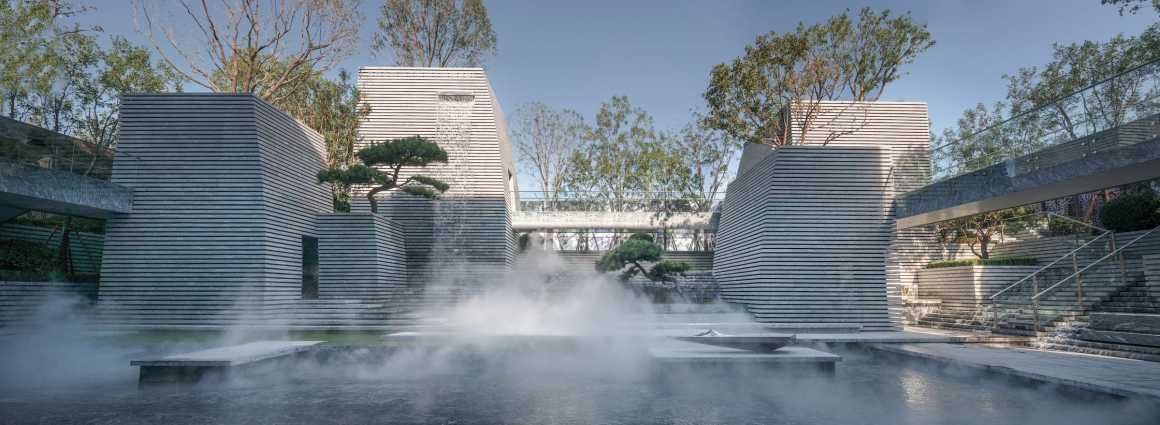

设计师探讨了当代栖居的普适性问题:如何消解商品房社区带来的陌生化、冷漠化?最后在场所精神中挖掘到该项目的设计理念,即“共享与开放”。
The designer discussed a question of contemporary living: how to eliminate the defamiliarization and the sense of indifference brought about by the commercial housing community? The design concept of the project that is “sharing and opening”, was excavated in the spirit of the place.
▼后场设计草图 Design draft


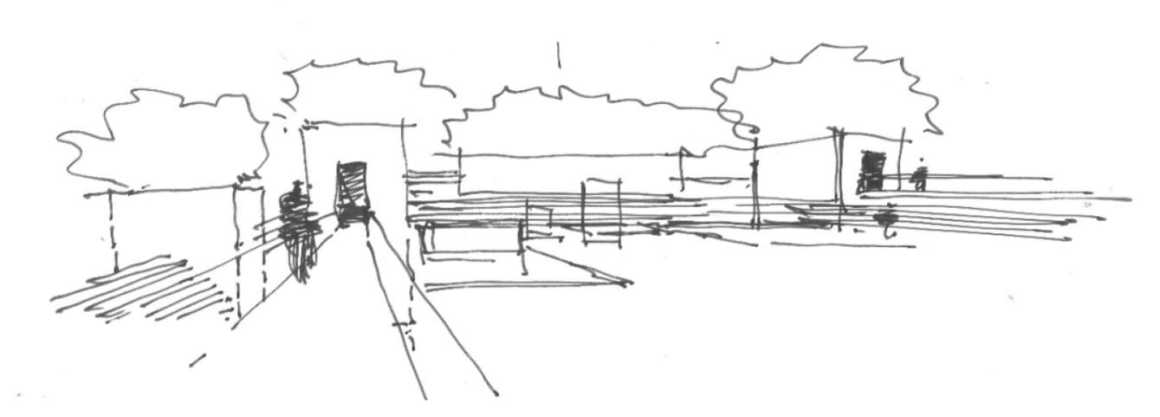
项目所在的通州,是北京功能外溢的行政副中心,被誉为“新北京”。那么,新旧之间的传承纽带因何而成?在对北京传统居住精神的研究中,设计师发现无论是“老北京”的当代人,还是“新北京”的当代人,依然对于北京传统的生活空间、胡同范式有着发自内心的喜悦,“胡同和四合院是老北京的城市血脉。胡同弄巷里的多户家庭,共享着开放的空间、公共设施,活跃的邻里关系造就了胡同的社区活力”。
在胡同精神的背后,设计师又挖掘到开放和共享老北京栖居范式。这是新老北京的栖居传承。
Tongzhou, where the project is located, is the administrative sub-center of Beijing and is known as ” New Beijing”. What kind of the inheritance link will be built between the old and new? Based on the traditional living spirit in Beijing, the designer found that both the contemporary of “old Beijing” and “new Beijing” still have heartfelt joy for Beijing’s traditional living space and Hutong paradigm, Hutong and Courtyard are the city blood of old Beijing. Many families in lane of Hutong share open space and public facilities, and active neighborhood relations have created community vitality in Hutong.
Behind the Hutong spirit, designers have discovered the paradigm of “sharing and opening” the dwelling place of old Beijing. This is the heritage of the new and old Beijing.
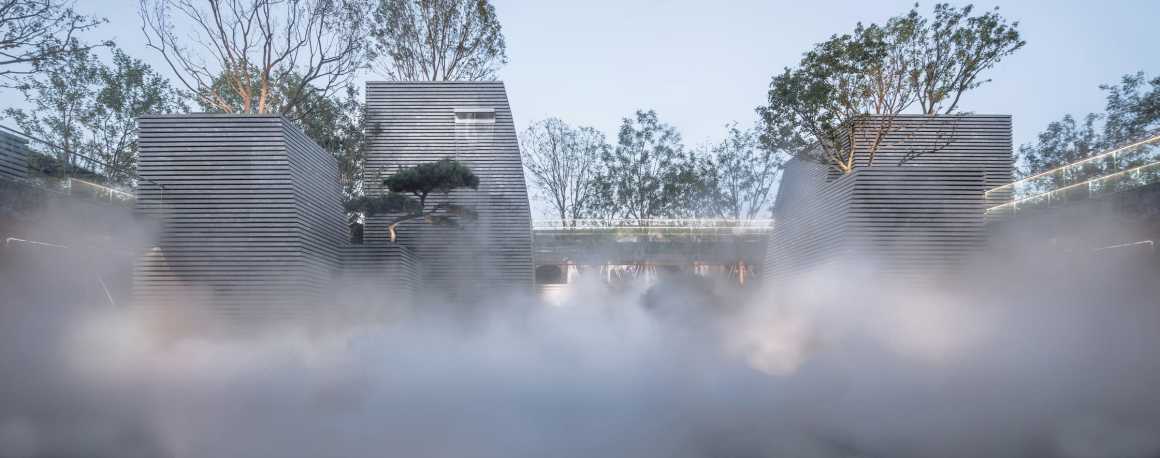
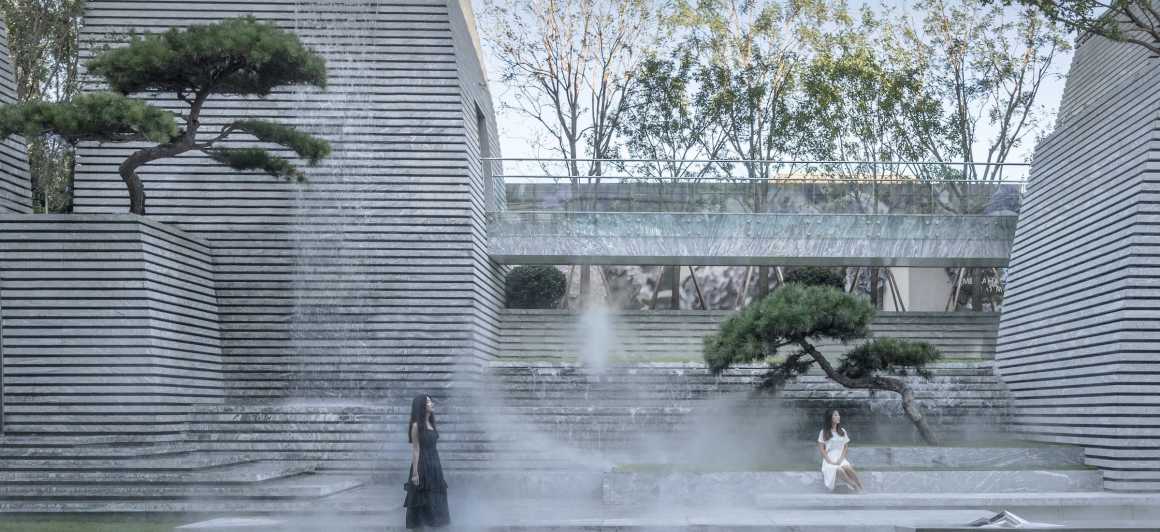
盒中的山水,重建邻里的积极日常
如何去演绎现代栖居的共享与开放?如何转译胡同的栖居范式到当下的生活文明中?一些研究社区的社会学家曾提到过“场共同体”的概念——相较于传统的熟悉人社区,商品房构建的新型社区,呈现出陌生化和冷漠化现实的背后,实质是邻里发生关系的“场共同体”的缺失。
Rebuilding an active daily life in neighborhood
How to interpret the “sharing and opening” of modern dwelling? How to translate the dwelling pattern of Hutong into the present life civilization? Some sociologists who study the community have mentioned the concept of “neighbor community” – compared with the traditional familiar community, the new community which were built by commercial housing reveals a reality about the lack of “neighbor community” behind the defamiliarization and the sense of indifference, which is in essence a lack of neighborhood relationship.
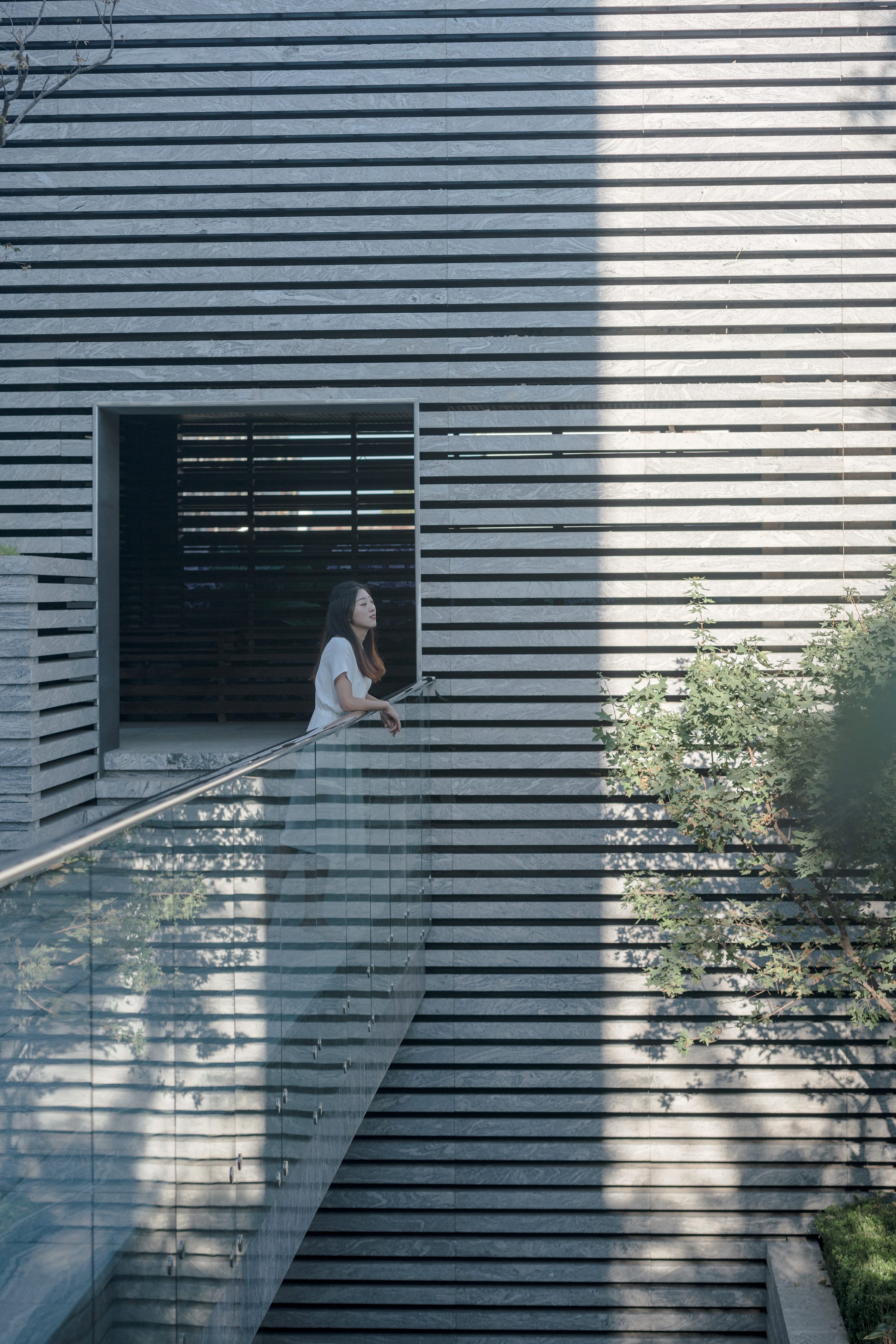
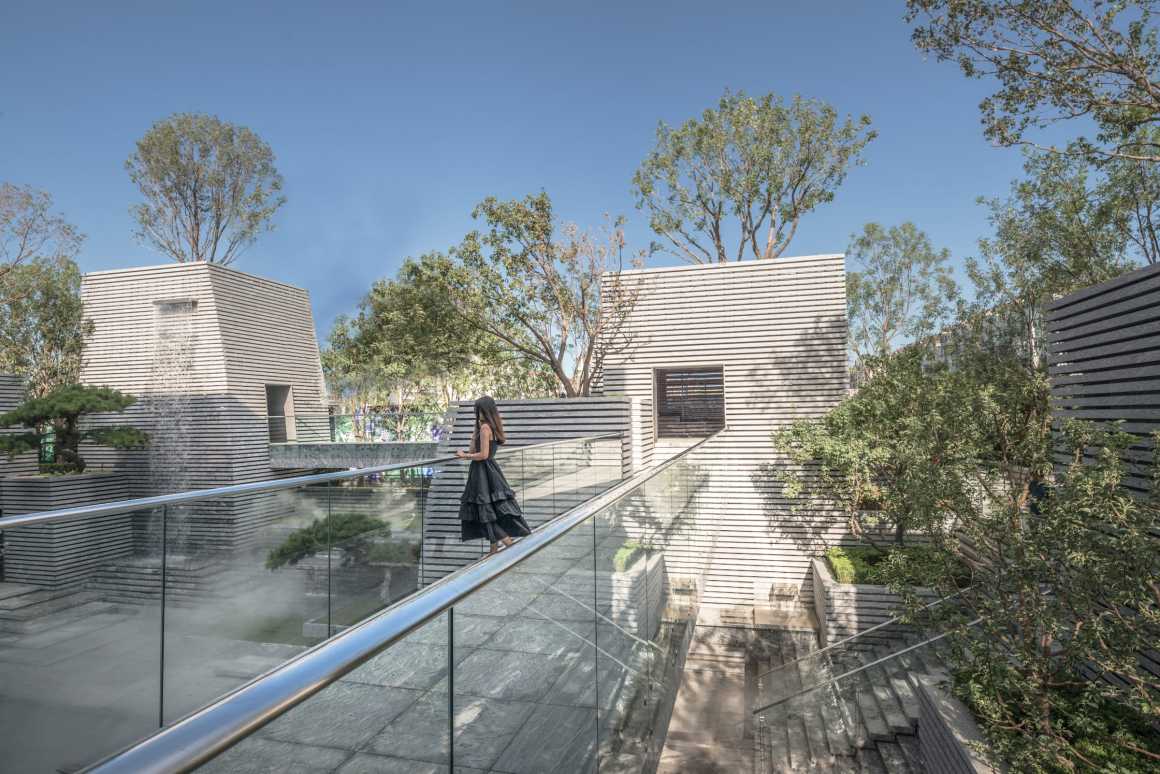

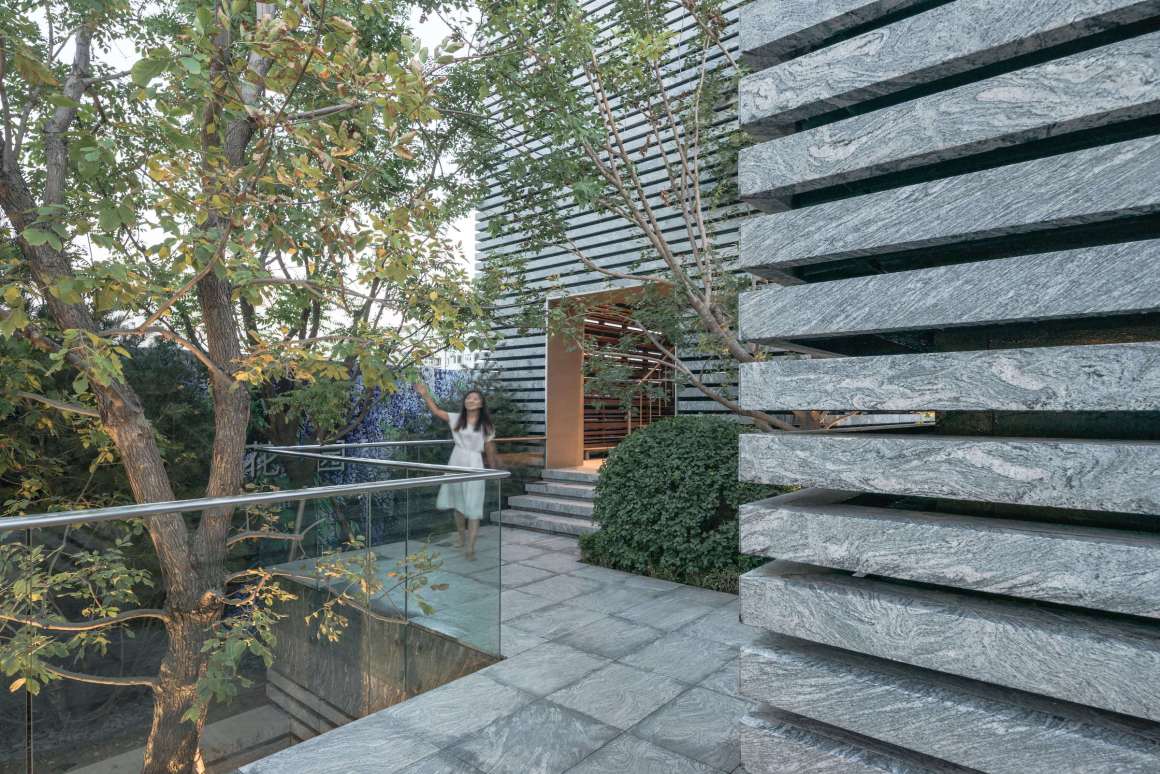
▼隔面观山:山行其中,相互成景却不相见 Looking at the mountains from different sides
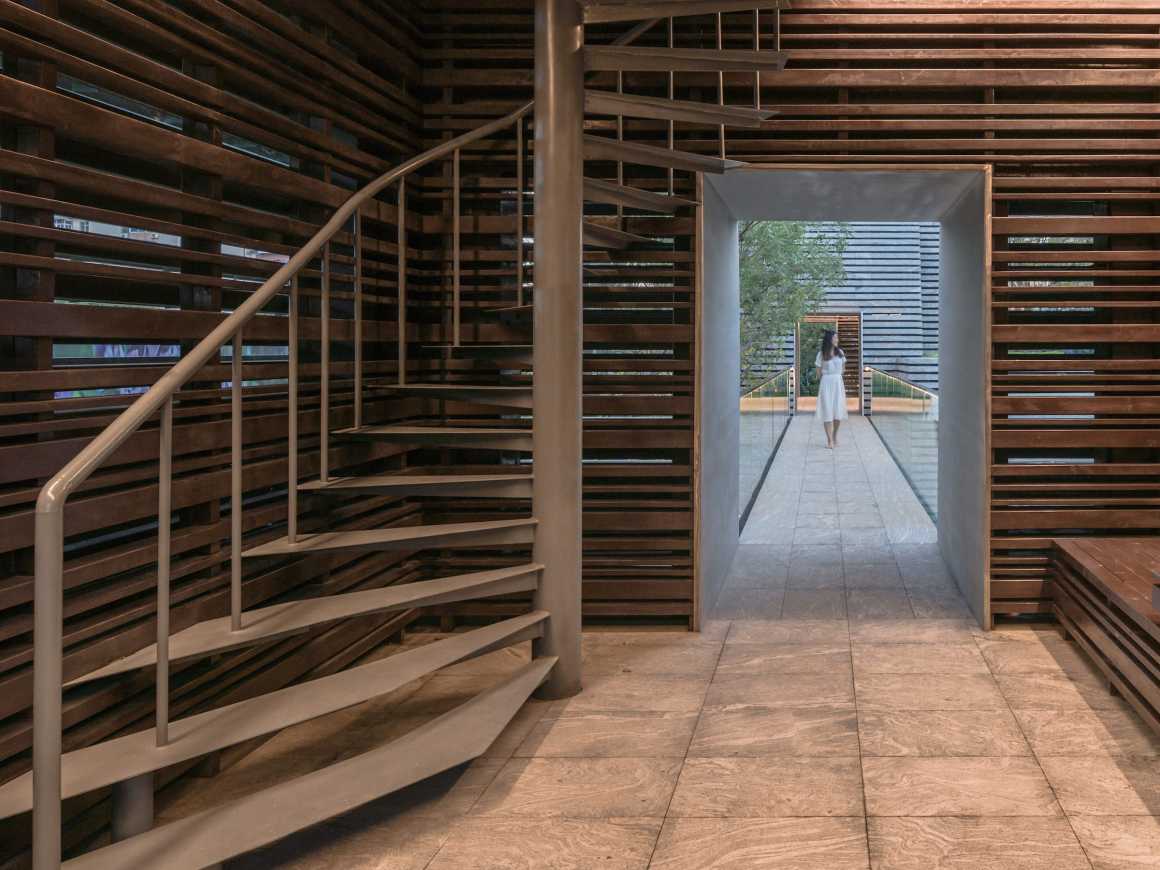
这就是设计师们期待已久的设计目标,“场共同体”:以开放和共享作为空间精神,重新有意识地构建真实的对话,真实的交往关系,以消除异化的日常生活,构建一个更加积极参与的日常生活场景。在这样一个目标的作用下,如何构建一个推动和实现人、自然和社区之间良性互动和可持续发展的“场共同体”?我们需要进一步的落地路径,“盒子里的山水”。
“盒子里的山水”呈现出两种体验:山水的空间体验“林泉高致”和山水的生活情趣“群贤畅叙”。
This is the long-awaited design goal about “neighbor community”: to take “sharing and opening” as the spirit of space, to consciously re-establish real dialogue and real communication relationship, to eliminate alienated daily life and to build a more active life scene. Under such a goal, how to construct a “neighbor community” to promote and realize the benign interaction and sustainable development among human beings, nature and communities? We need a further realizable measure–“Landscape in the Box”.
“Landscape in the Box” presents two kinds of experiences: the spatial experience of landscape “Art of mountains-and-waters” and the life interest of landscape “Everyone talk freely”.

林泉高致,是“场共同体”的物质环境营造。以山水“可行可望可游可居”制造人与自然、人与空间交互的物质环境,丰富空间层次的情趣性。在该项目中,设计师力求“行山涉水”为空间叙事,让本来的平铺直叙转换为“成岭成峰·远近高低”的柳暗花明。
群贤畅叙,是“场共同体”的生活内容赋能。以积极日常制造人与人交往的契机,赋予空间功能的多义性。那么,这个项目设计师试着解构常规的室内功能如书吧、茶室、花艺等复合并嵌入景观空间,形成人际互动的枢纽和契机。
“Art of mountains-and-waters” is the material environment construction of “neighbor community”. To create a physical environment of interaction between human and nature and between human and space with landscape allows to walk, watch, relax and to be habitable, also to enrich the space level. In this project, designers strive to make a narrative space, so that the original simple space can be transformed into a diverse one.
It is the life content of the “neighbor community” that about “Everyone talk freely”. To actively create opportunities for people to communicate with each other in daily life and to give polysemy to space functions. Designers try to deconstruct the traditional indoor functions such as book bar, tea room and flower art and embed them into the landscape space to form a hinge for interpersonal interaction.
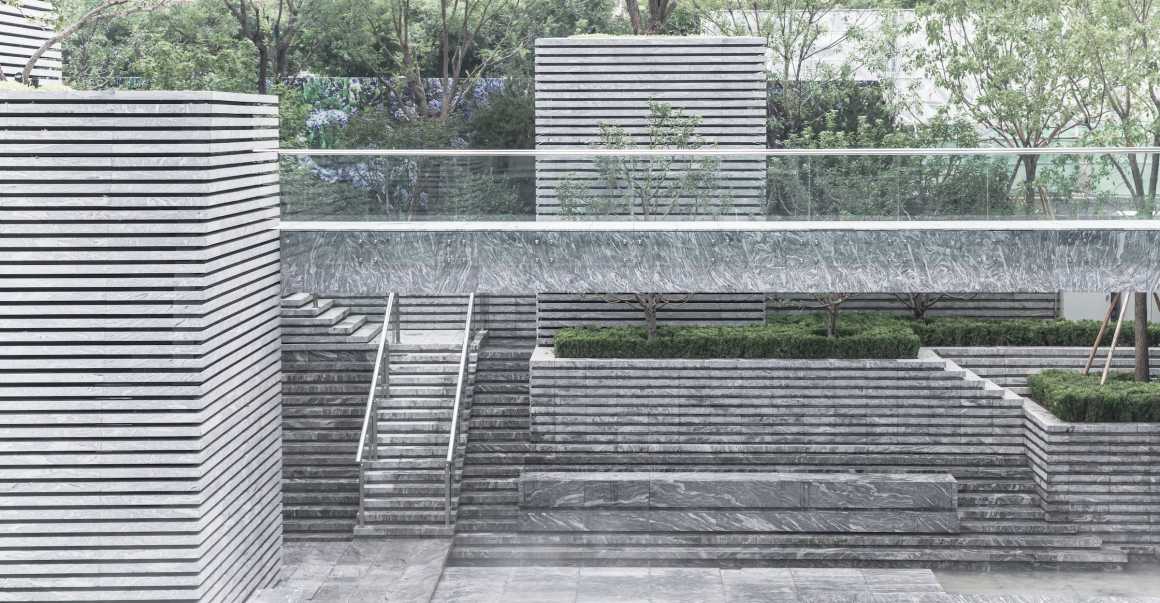
“林泉·群贤”,即意在通过探索“林泉高致”的山水与生活的可能,尝试在当代意趣下构建“群贤畅叙”的“场共同体”。
The meaning of these two kinds of experiences is that try to build a “neighbor community” of “Everyone talk freely” in contemporary interest by exploring the possibility of “Art of mountains-and-waters” in landscape and life.
©山水比德胡超
笠翁峭壁,芥子须弥的闲情偶寄
项目位于通州核心区,没有特殊的场地条件和资源优势。前场是局促的市政沿街面,后场则是一块径深不足十五米的下沉空间,两侧距离也不过二十多米,空间有限。如此局促的空间,如何实现最初的设计目标?
回溯古典园林“以小见大”的经典,李渔足以为师。“地止一丘,故名‘芥子’,状其微也。往来诸公见其稍具丘壑,谓取芥子纳须弥之义。”我认为李渔之意,不仅在于芥子须弥的构园法式,更在乎偶寄于园林的生活闲情,音律编剧、修容治服、种植颐养……
The design conception of retaining wall
The project is located in the core area of Tongzhou, with no special site conditions and resource advantages. The front court is a cramped municipal street, while the back court is a sinking space less than 15m deep, with only 20m distance from both sides and limited space. How to achieve the original design goal in such a cramped space?
Looking back on the conception of the classical garden “Small see big”, Yu Li was enough to be a teacher. His thought lies not only in construction method of the garden, but also living with a leisure life in the garden, people can write, relax, planting for the rest …


在具体的设计上,李渔的“笠翁峭壁”更是提供了直接的借鉴——会所后场出口的挡土墙——一反常规挡土墙的“粉壁为纸,叠石为绘”式的处理,而是采用“笠翁峭壁……蔽以亭屋,仰观如削,则穷崖绝壑无异”。
对挡土墙予以打破、解构,形成一出前后错落有致的体块组合。在体块组合间,形成了处“横看成岭侧成峰”的山水空间。同时这些空间体块被寄予生活的功能,使室内功能室外化,成为共享社区的雏形。空间体块的功能主题在抽象的形式下回归中国文化精髓——“书、画、茶、棋”。再通过廊道的联系,将其形成组合式的空间,在不同空间体验构筑的景观体验线索中呈现为层次丰富、起承转合的山水格局,恰似一处“行山涉水”的林泉高致。
In the specific design, inspired from Yu Li’s conception – the retaining wall at the exit of the back yard of the clubhouse – adopt an anti-conventional way to design it, by uses a special way which to make walls to look like cliff.
The retaining wall is broken and deconstructed to form a combination of blocks which are strewn at random in front and behind. Between the body-block combinations, a diverse landscape space is formed. At the same time, these space blocks are placed in the function of life, making the indoor function into outdoors’ and becoming the prototype of the shared community. The functional theme of space blocks returns to the essence of Chinese culture in an abstract form – “reading, painting, tea, chess”. Through the corridor connection, it forms a combined space, presenting a landscape pattern of rich levels and integration in the landscape experience clues which is constructed by different space experiences.
▼横看成岭侧成峰,远观近看各成景 The scene will change at every step

帆动自然,艺术介入的当代语言
设计一步步聚焦,从项目精神到空间手法,直至设计语言的定格。本项目以《潞河督运图》为灵感来源,提取通州文化元素“帆”,作为设计主题,将“云天之间,帆动自然”古通州的盛势之态,极简之中大肆铺陈。
前场是整个景观序列的开头,是整个景观序列的重点,此处运用了阵列式雕塑“万帆”渲染热烈氛围。而会所前的艺术景观灯景,则与后场的空间形成虚隐的轴线关系。整体的前场空间构筑了一出“万帆林立人如蚁,灯火星罗浪白鸥”的恢弘大气,恍然间感受到通州的历史底蕴与气势。
Art intervenes in the contemporary language
The design measures from the project spirit to the space technique to the design language. This project takes a painting from the Qing dynasty as its inspiration, extracts Tongzhou cultural element “Sail” as its design theme, and lays out the prosperity of ancient Tongzhou in a very simple way.
The front courtyard is the beginning of the whole landscape sequence also the focus. The array sculpture “Wanfan” is used here to render a warm atmosphere. The art scene in front of the clubhouse forms a virtual axis relationship with the space in the back yard. The whole space has built up a grand atmosphere, people can feel the historical background and momentum of Tongzhou.
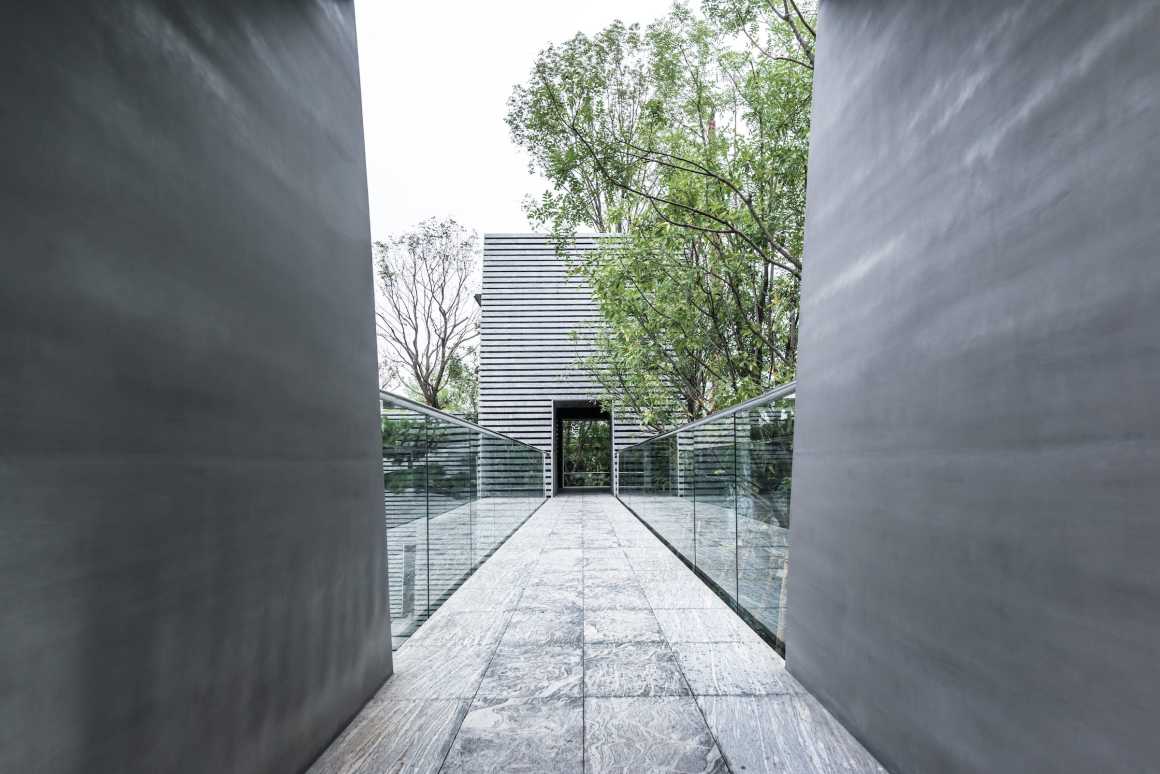
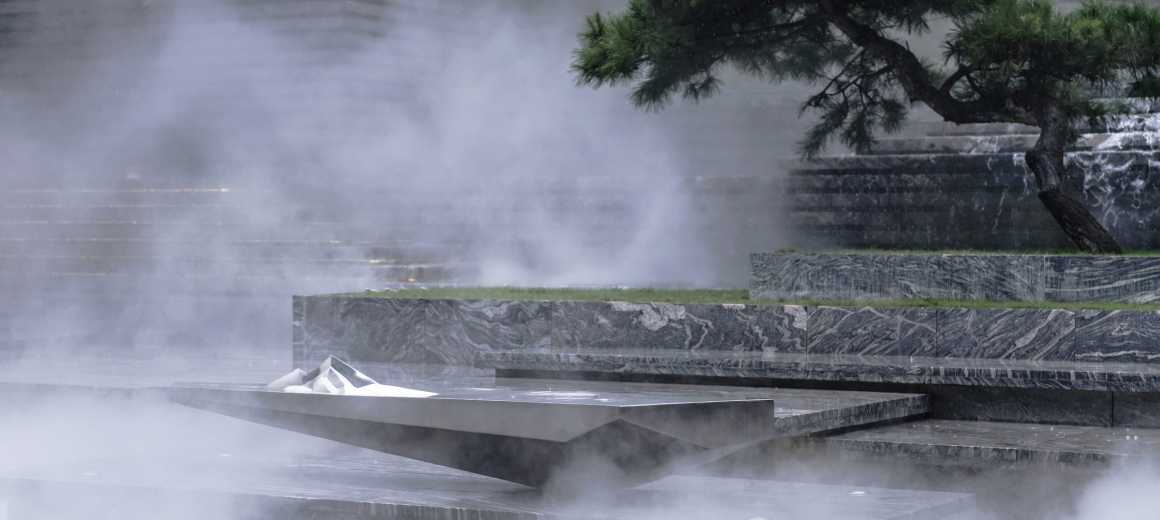

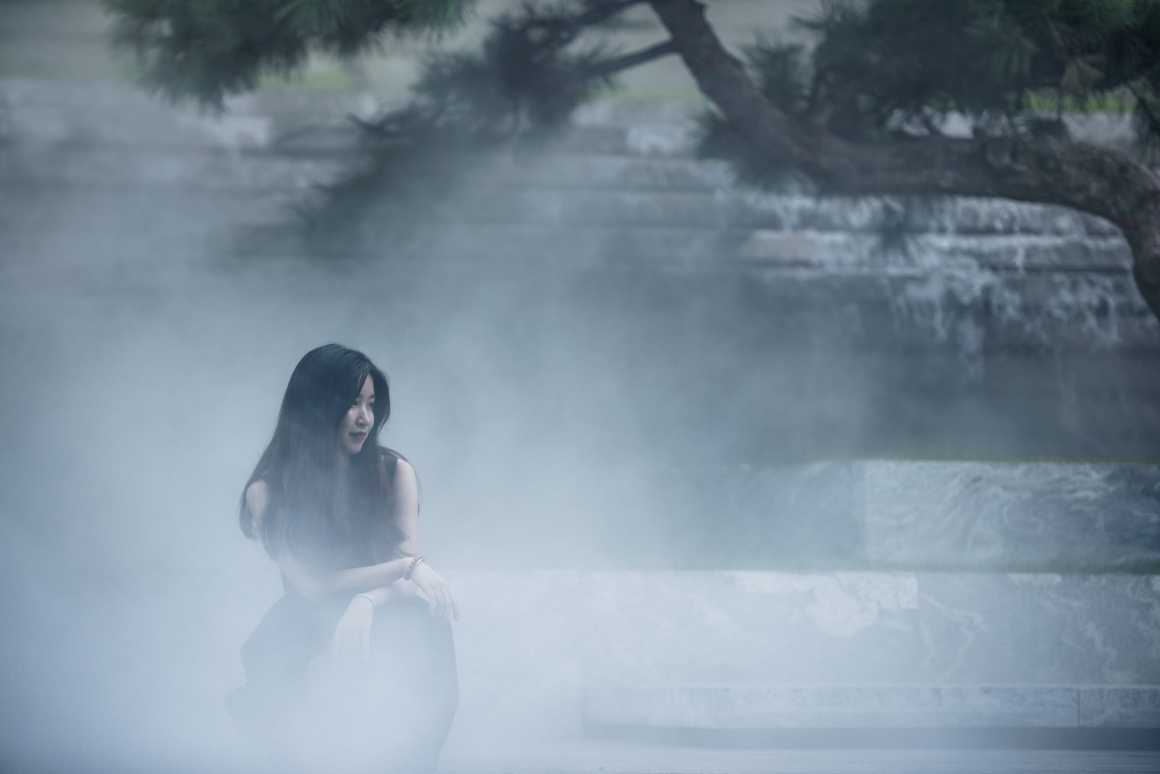
此外,对于后场的体块进行了“帆”式细节优化和提升。为力求将注意力驻留在空间本身及其承载的生活闲情,体块的立面并无过多的装饰。但为了弱化体块彼此的对峙感,设计对体块面向围合空间一面的棱角进行了曲线式的处理,暗喻“帆”御风而行的曲线之姿以及运动的神韵。
In addition, the “Sail” type details of the back yard are optimized and improved. In an effort to focus attention on the space itself and the nature of leisure life it carries, the facade of this block does not have too much decoration. However, in order to weaken the sense of confrontation between the blocks, the edge and corner of the block facing the enclosed space is designed to be curved, symbolizing the curved posture of the “Sail” and its verve of movement.



“为生活而设计”便是有意于营造有温暖、有温度的景观。这种温暖并不止于色彩的温暖,以及空间的宜人尺度,关键的还是在于人性的充分表达和绽放。而这种绽放,不仅需要诗意的空间,更需要一种功利的空间:让人因此走出私宅,放浪形骸于自然造化间;让人因此走出自我,嬉笑怒骂于你我他之间;让人因此走出冷漠,老吾老以及人之老之间,这便是北京通州当代万国城MOMA。
“Design for Life” is intended to create a warm landscape. This kind of warmth is not only the warmth of color, but also the pleasant scale of space. The key lies in the full expression of human nature. It not only need to create a poetic space, but also utilitarian space: lead people walk out of private houses and self but into nature, interpersonal interaction, so this is MOMA.
▼平面图 Plan
景观设计:广州山水比德设计股份有限公司
景观施工:北京顺景园林股份有限公司
业主单位:当代置业
项目地址:北京通州玉桥西路与运河西大街交汇处
摄影:山水比德 胡超
Landscape Design: Guangzhou S.P.I Design Co., Ltd.
Landscape Construction: Beijing Sunshine Landscape
Owner’s Unit: Modern Land (China) Co., Ltd.
Project Address: Tongzhou, Beijing, China
Photography: Chao Hu | Guangzhou S.P.I Design Co., Ltd.
更多 Read more about: 山水比德 Guangzhou S.P.I Design Co., Ltd.




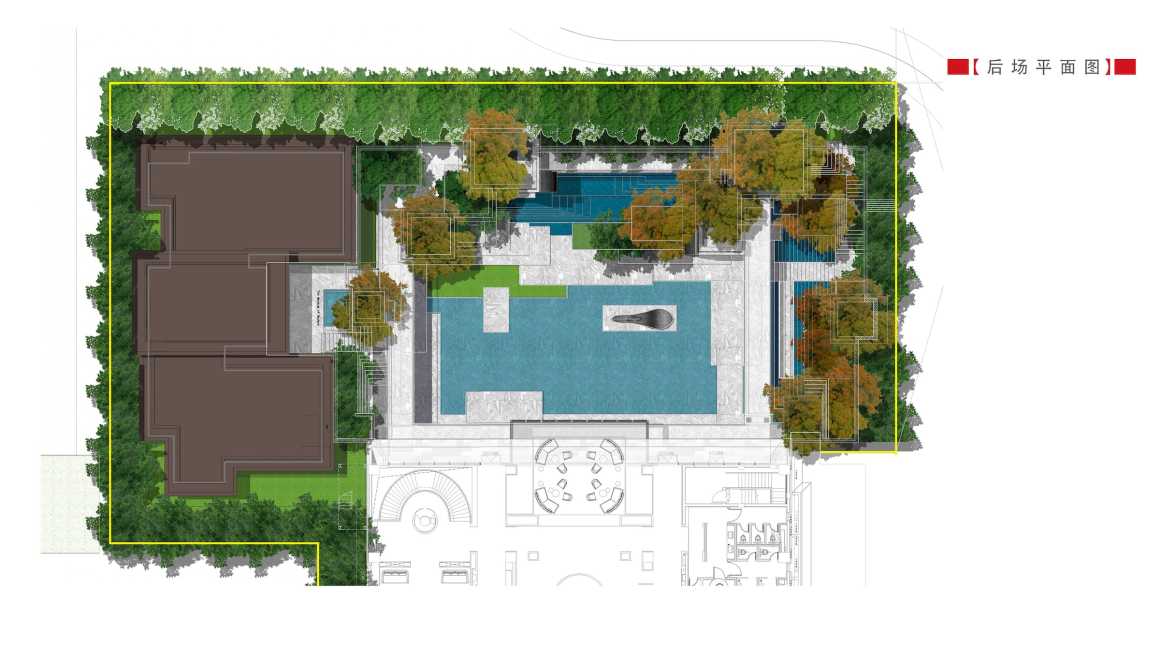


设计裁缝孙虎大师
哈哈哈